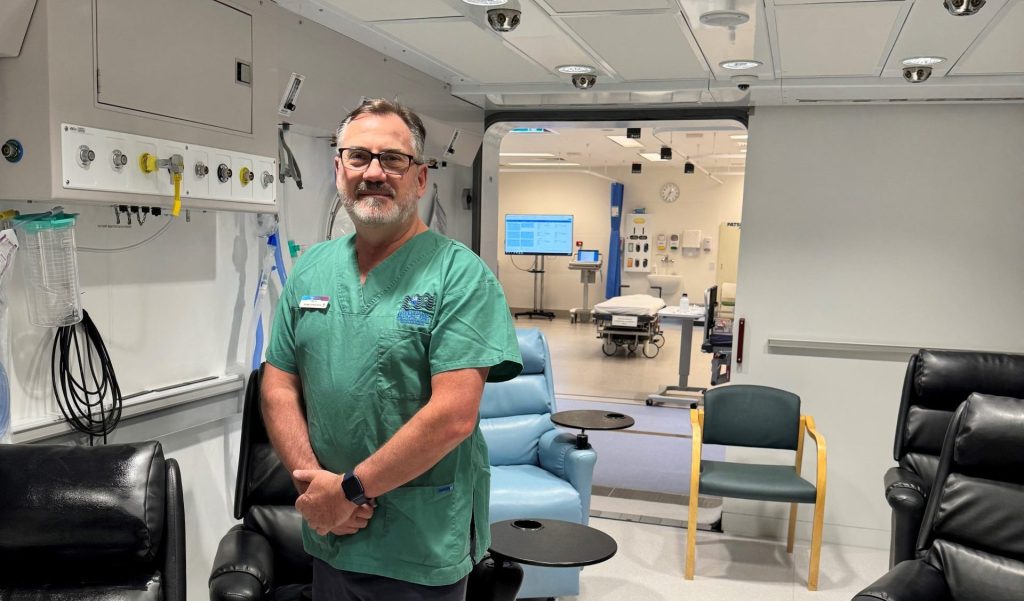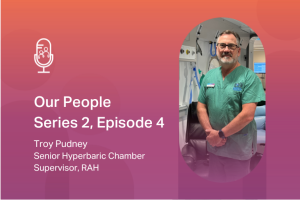If you’re a scuba diver or reader of adventure novels, you may have heard of ‘the bends’ – a dangerous condition that results from ascending too rapidly from deep water to the surface.
The bends is treated by placing patients in a pressurised room called a hyperbaric chamber. The Royal Adelaide Hospital’s hyperbaric chamber is one of the ten largest in the world.
But most patients who attend the RAH’s chamber do not have the bends.
Instead, they’re people with other serious health conditions that benefit from exposure to the high pressure, oxygen-rich environment in the chamber.
The RAH’s Hyperbaric Medicine Unit provides critical treatment for people with damage linked with previous radiation treatment, for wounds that are slow to heal, and for people experiencing sudden hearing loss. Other Medicare-approved conditions suited for treatment include persistent or dangerous bacterial infections such as gangrene, and crush injuries.
More than 70,000 high pressure oxygen treatments have been delivered at the RAH’s Hyperbaric Unit, serving 4,000 patients over 40 years.
On call every day of the year
Former Navy Clearance Diver Troy Pudney is Senior Hyperbaric Chamber Supervisor at the RAH.
“Each session is called a dive, reflecting the physics of the treatment and its diving heritage,” says Troy.
In 2024, Adelaide did more multi-patient dives than any other hyperbaric chamber operating in Australia.
“We operate five days per week, with up to five dives a day and our specialised staff remain on-call to treat emergencies 24/7, every day of the year,” says Troy.
Treatments at the RAH’s Hyperbaric Medicine unit are by referral only.
Breathing 100% oxygen
To receive treatment, patients sit in the chamber where the air pressure is raised to a level higher than normal. Then they breathe 100% oxygen, which is absorbed more efficiently into the cells and bloodstream due to the increased pressure.
The chamber conditions help promote healing by delivering more oxygen to tissues damaged by disease, injury or poor blood supply.
“An average dive runs for about two hours and patients may receive 20-40 sessions depending on the medical condition being treated,” Troy says.
“The chamber has a maximum underwater equivalent working depth of 30 metres, but patients are generally treated at a depth of 14 metres.”
Patients are able to relax in a chair or bed during dives and can read a book or watch television.
Every treatment has minimum of one qualified hyperbaric attendant accompanying the patients inside the chamber, a hyperbaric nurse on the outside, a hyperbaric specialist medical officer and a specialist hyperbaric chamber diving supervisor controlling the treatment.
Find out more from Troy Pudney in his Our People podcast >



